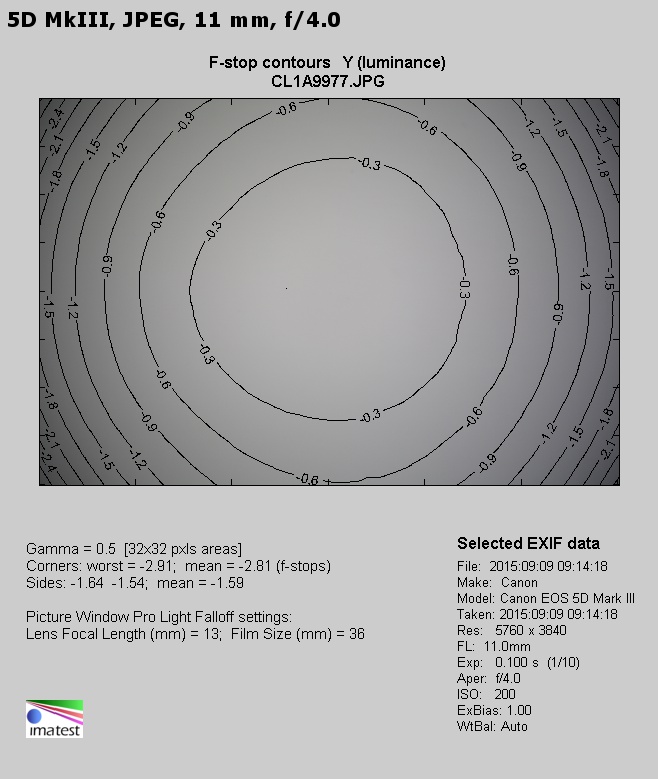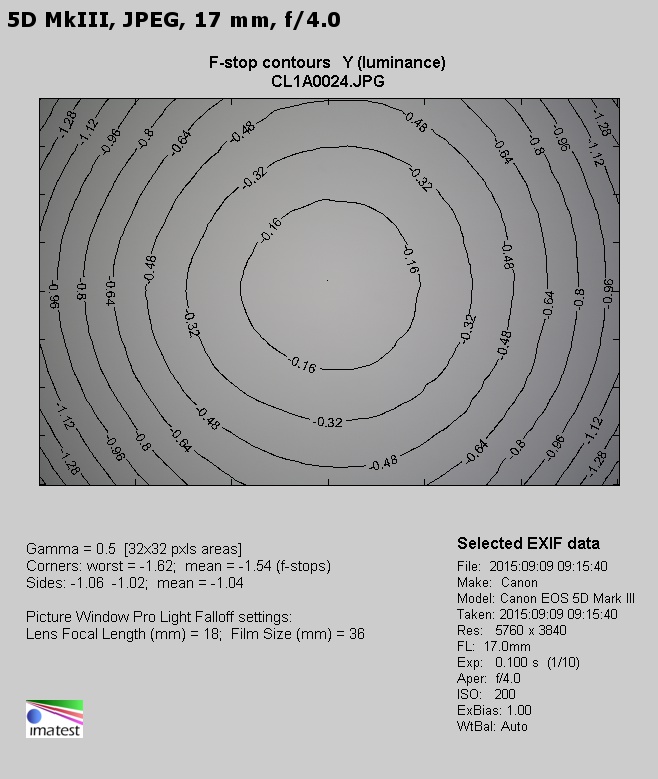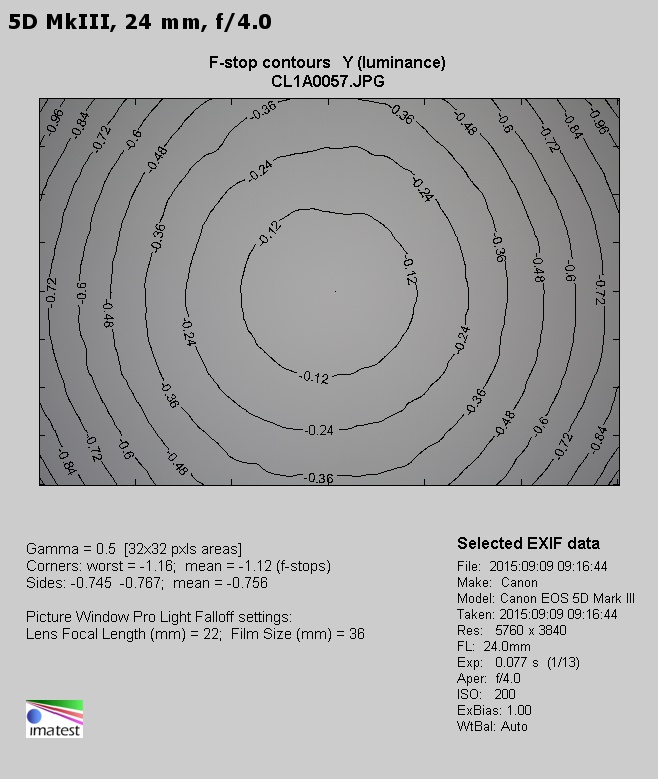Canon EF 11-24 mm f/4L USM
8. Vignetting
| Canon 50D, 11 mm, f/4.0 | Canon 50D, 11 mm, f/5.6 |

|

|
| Canon 50D, 17 mm, f/4.0 | Canon 50D, 17 mm, f/5.6 |

|

|
| Canon 50D, 24 mm, f/4.0 | Canon 50D, 24 mm, f/5.6 |

|

|
The image which can be observed here is surprisingly good. At a very difficult combination of 11 mm and f/4.0 you lose only 26% (−0.88 EV) of light in the corners. That value decreases to 11% (−0.32 EV) on stopping down the aperture to f/5.6 and by f/8.0 it drops even further to just 9% (−0.28 EV).
Please Support UsIf you enjoy our reviews and articles, and you want us to continue our work please, support our website by donating through PayPal. The funds are going to be used for paying our editorial team, renting servers, and equipping our testing studio; only that way we will be able to continue providing you interesting content for free. |
- - - - - - - - - - - - - - - - - - - - - - - - - - - - - - - - - - - - - - - - - - - - - - - -
The situation is even better at the 17 mm focal length where, at the maximum relative aperture, the vignetting reaches 20% (−0.64 EV). It becomes almost entirely imperceptible on stopping down the aperture to f/5.6 where it amounts to just 9% (−0.28 EV).
At 24 mm there are no problems almost at all, even with the lens wide open where the brightness loss in the frame corners amounts to 16% (−0.51 EV). By f/5.6 that aberration vanishes almost completely (8% i −0.26 EV).
Of course we expected far more problems on full frame but first let’s have a look at the appropriate thumbnails.
| Canon 5D MkIII, 11 mm, f/4.0 | Canon 5D MkIII, 11 mm, f/5.6 |

|

|
| Canon 5D MkIII, 17 mm, f/4.0 | Canon 5D MkIII, 17 mm, f/5.6 |

|

|
| Canon 5D MkIII, 24 mm, f/4.0 | Canon 5D MkIII, 24 mm, f/5.6 |

|

|
The combination of the 11 mm focal length and the f/4.0 relative aperture already shows you the scale of the problem the Canon optics constructors had to deal with. The vignetting reaches here a very high level of 62% (−2.81 EV). That aberration is still pretty visible by f/5.6 where you got a value of 41% (−1.53 EV). A sensible level can be seen only by f/8.0 where the result amounted to 26% (−0.89 EV). By f/11 and f/16 the vignetting value remained on the same level of 20% (−0.66 EV).
The middle of the focal range is better but it doesn’t mean the vignetting won’t be noticed there. Quite the opposite is true – by f/4.0 it is 41% (−1.54 EV) so it can be perceived without any problems. Only by f/5.6 you deal with a moderate value of 23% (−0.75 EV). By f/8 that aberration level decreases to 17% (−0.55 EV), and by f/11 to 15% (−0.48 EV). Further stopping down doesn’t have any measurable influence over the vignetting results.
The fewest problems with the vignetting you’ll experience at the maximum focal length where, by f/4.0, the light fall-off in the frame corners amounts to 32% (−1.12 EV). On stopping down to f/5.6 it decreases to 23% (−0.74 EV) and by f/8.0 it gets even lower, to 19% (−0.61 EV). The results by f/11 and f/16 are respectively 15% (−0.47 EV) and 13% (−0.42 EV).
 |
 |
 |






